Where to find real seafruits in Paris? In Vaudeville, La Coupole, Presqu’Île, beyond the sea…
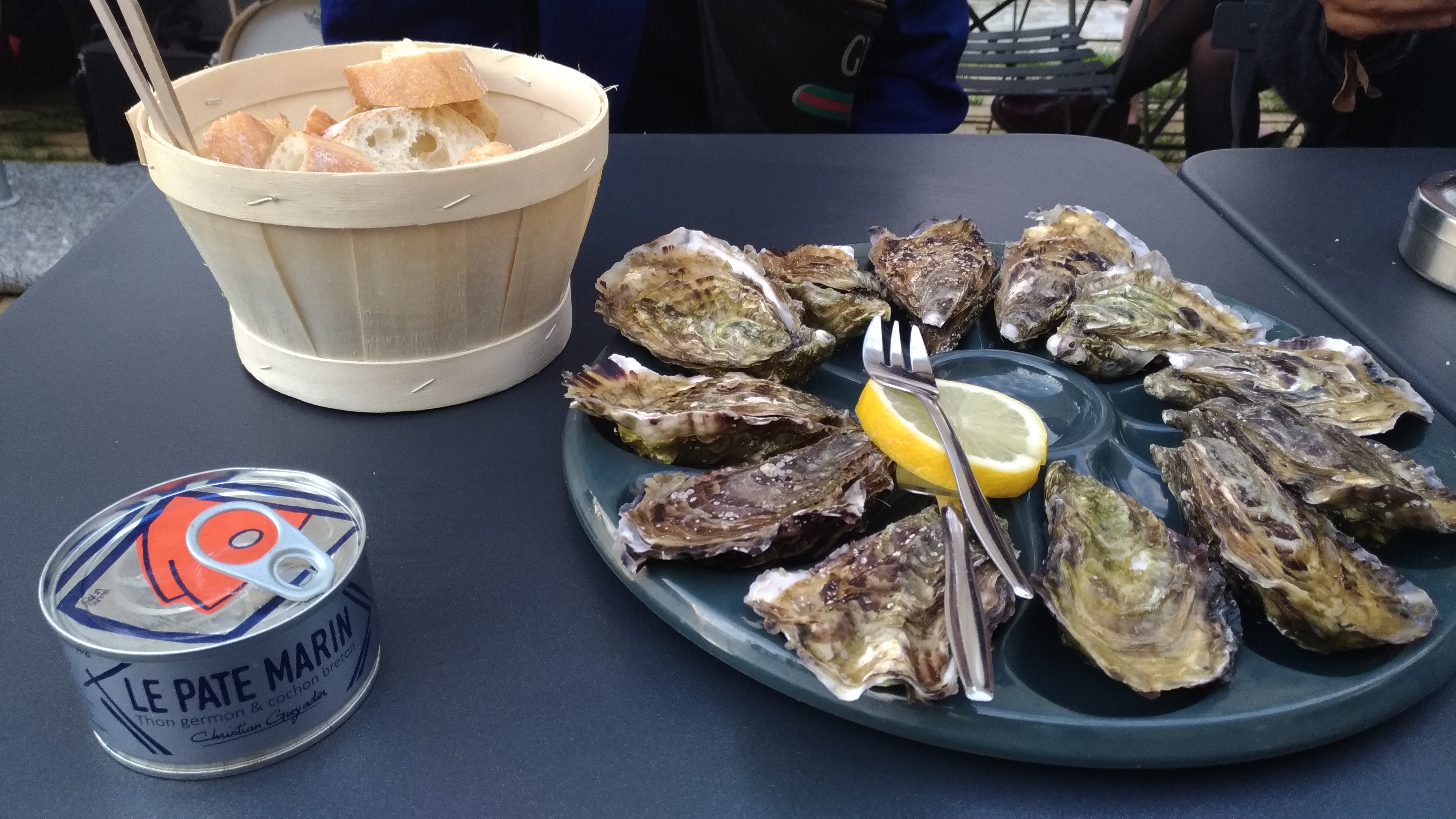
The ocean natural resources have ever been part of the French culture, especially gastronomy, through seafood available in some ancestral hospitality places in Paris, called brasseries. Those institutions employ dedicated staff for the preparation of those products that have to remain as fresh as possible in order to satisfy the iodine specialities enthusiasts. We can also find restaurants entirely devoted to this seafruits vocation, worshiping the benefits of the ocean nutrition.
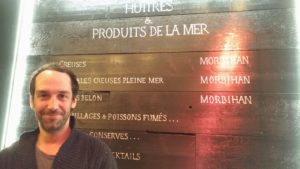
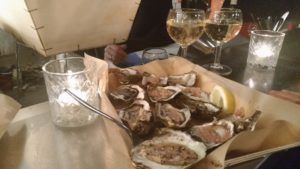
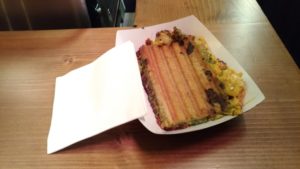
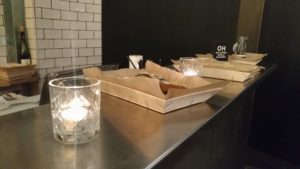
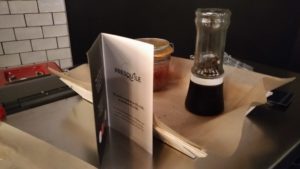
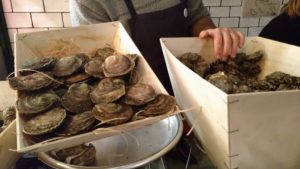
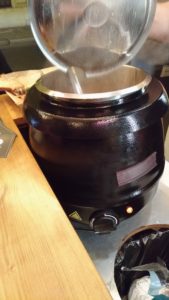
 Among them, one of the latest arrivals in Paris would be an outsider, baptised Presqu’Île, working directly with oyster producers, les Chantiers Jaouen, located in La Trinité-sur-Mer, in Britain. The oyster bar is ideally nested in the departments area, in a confidential space, enough to enjoy a plate of huîtres creuses (hollow oysters) or even the chef speciality, the haddock sandwich, relished with a glass of white wine on the zinc. Depending on the season, you may have the chance to discover the mulled wine, revisited still with white wine or the poppy lemon cake. Maxime and Alexis, the co-founders of this culinary adventure, propose also itinerant three-wheeled bikes made of oyster and lobster roll bars, gastronomic workshops and musical cabins; those a program of seafood tasting, live producers, in a guinguette or pop atmosphere (photo credits: Alex Plato).
Among them, one of the latest arrivals in Paris would be an outsider, baptised Presqu’Île, working directly with oyster producers, les Chantiers Jaouen, located in La Trinité-sur-Mer, in Britain. The oyster bar is ideally nested in the departments area, in a confidential space, enough to enjoy a plate of huîtres creuses (hollow oysters) or even the chef speciality, the haddock sandwich, relished with a glass of white wine on the zinc. Depending on the season, you may have the chance to discover the mulled wine, revisited still with white wine or the poppy lemon cake. Maxime and Alexis, the co-founders of this culinary adventure, propose also itinerant three-wheeled bikes made of oyster and lobster roll bars, gastronomic workshops and musical cabins; those a program of seafood tasting, live producers, in a guinguette or pop atmosphere (photo credits: Alex Plato).
More information on Presqu’Île website, 57 Rue de Bellechasse, 75007 Paris. 06 45 47 94 70
The breweries generally offer an extended fixed menu and some suggestions of the day, depending on the seasons. Several, especially in Paris and in major cities, have a seafood bank that can be important, the chipping usually working outside, near the entrance (La Lorraine, Le Vaudeville, for example).
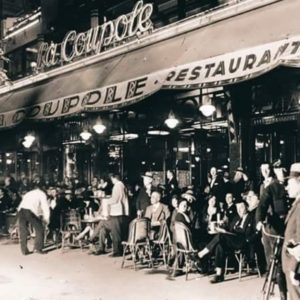 For instance, we couldn’t not mention thus La Coupole. Opened on December 20, 1927, in the Roaring Twenties, by Ernest Fraux and René Lafon under a name that eclipses that of the neighbour literary café Le Dôme, one of the other establishments on the boulevard du Montparnasse, La Coupole had been enjoying a rapid success. This opening, lead to a memorable party with huge stocks of champagne, 1,200 bottles by the time for 2,500 guests (nowadays provided by Champagne Jacquart, photo credits: La Coupole).
For instance, we couldn’t not mention thus La Coupole. Opened on December 20, 1927, in the Roaring Twenties, by Ernest Fraux and René Lafon under a name that eclipses that of the neighbour literary café Le Dôme, one of the other establishments on the boulevard du Montparnasse, La Coupole had been enjoying a rapid success. This opening, lead to a memorable party with huge stocks of champagne, 1,200 bottles by the time for 2,500 guests (nowadays provided by Champagne Jacquart, photo credits: La Coupole).
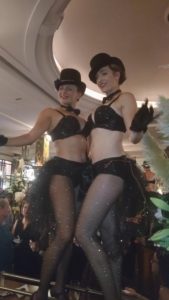
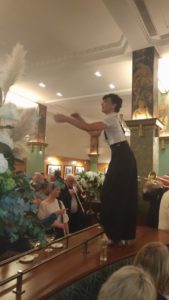 Another huge party, in the same style, occured last 26th September 2018, for the Revival of the place, after some months of renovation works, with maybe the same amount of bottles and a bunch of vintage dancers and big band, who would let the happy few to feel the origins of a Great Gasby’s party (photo credits: Alex Plato).
Another huge party, in the same style, occured last 26th September 2018, for the Revival of the place, after some months of renovation works, with maybe the same amount of bottles and a bunch of vintage dancers and big band, who would let the happy few to feel the origins of a Great Gasby’s party (photo credits: Alex Plato).
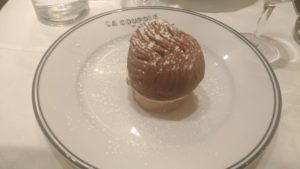 Since 1927, La Coupole has been a symbol of the History of Montparnasse. In an Art Deco mood, listed as a historical heritage, the Chef offers essential dishes from the typical parisian Brasseries such as the Grenoble-style stripe, the real pepper steak and the famous seafood platters, that you would compose with the best of french shellfish and crustacean, from the prominent tide bench at the entrance of the institution.
Since 1927, La Coupole has been a symbol of the History of Montparnasse. In an Art Deco mood, listed as a historical heritage, the Chef offers essential dishes from the typical parisian Brasseries such as the Grenoble-style stripe, the real pepper steak and the famous seafood platters, that you would compose with the best of french shellfish and crustacean, from the prominent tide bench at the entrance of the institution.
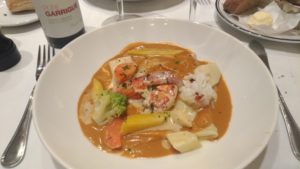
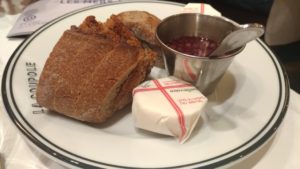

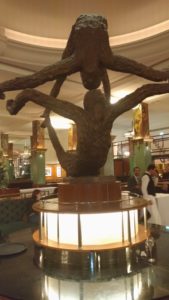
You could also find the famous Indian lamb curry in La Coupole since 1927, served by a traditional cook with a sumptuous costume. Otherwise the House classics, like the American lobster ravioli (above), your composed seafruit homemade selection on a ice-cubed plateau. Don’t forget, as well, to try other traditional dishes: fricassee of kidneys with Armagnac, blanquette of monkfish and ray wing à la Grenobloise. For dessert, the Angelina Mont-Blanc (above) among many others, like the Crêpe Suzette, served with a blaze of Grand Marnier, as an apogée of your dive in History.
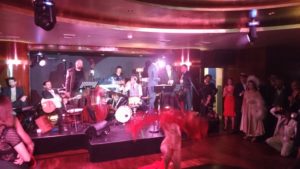
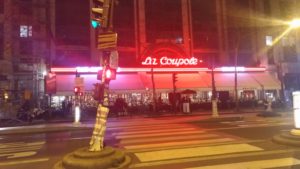
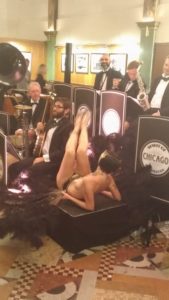

The dancehall of La Coupole, in the basement, opened on December 24, 1928 and is the place where the musicians perform on the sound of charleston, swing and bebop. Among the first artists and intellectuals to adopt the place, we can mention Jean Cocteau, (who participated in the inauguration party), Foujita, Kisling, Giacometti, Zadkine, Josephine Baker, ManRay, Georges Braque or Brassaï. Louis Aragon and Elsa Triolet meet there in 1928. In the 1930s, the aficionados of the place are Picasso, Simone de Beauvoir and Jean-Paul Sartre, Sonia Delaunay, André Malraux, Jacques Prévert, Marc Chagall, Édith Piaf among many others.
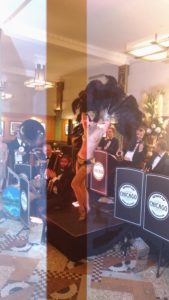
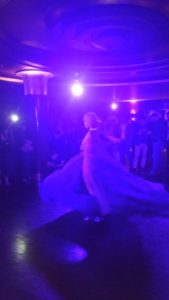 In the 1940s and 1950s, you may have met Ernest Hemingway, Marlene Dietrich, Charles Aznavour or Ava Gardner. After the Second World War, Yves Klein dined there practically every night.
In the 1940s and 1950s, you may have met Ernest Hemingway, Marlene Dietrich, Charles Aznavour or Ava Gardner. After the Second World War, Yves Klein dined there practically every night.
Not to forget, the artistic heritage of the place is very important. We can particularly mention the 27 lap pillars and pilasters of the hall. These were decorated in 1927 by 27 painters, faithful of the bohemian Montparnasse. These painters were chosen by a committee or seated an influential figure in Art Deco, Charles Dufresne, art critic Florent Fels and André Salmon. Legend has it that they were paid with beverages…
La Coupole Paris, 102, boulevard de Montparnasse, 75014 Paris, 01 43 20 14 20.

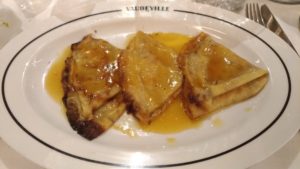
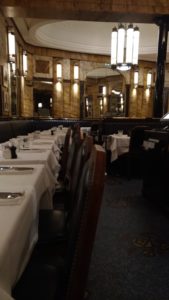
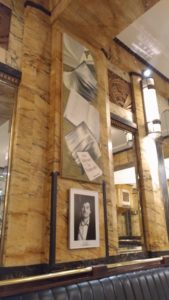 In the heart of Paris, facing the majestic Palais Brongniart, stands a famous brasserie proudly for decades of tradition. On last year 2018, the Brasserie Vaudeville celebrated 100 years. 100 years of history, traditional cuisine, and parisian life…
In the heart of Paris, facing the majestic Palais Brongniart, stands a famous brasserie proudly for decades of tradition. On last year 2018, the Brasserie Vaudeville celebrated 100 years. 100 years of history, traditional cuisine, and parisian life…
Turning the back on the Bourse, crossing the terrace of the Vaudeville and admire the traditional French Cuisine and seafood stand outside, and repel the rumor of the world, and dive into the Roaring Twenties. From the back of the room, a magnificent chandelier with cylindrical opaline, descends majestically from the dome. The champagne bucket stands between the tablecloths seem to echo the columns of the Palais Brongniart (photo credits: Alex Plato).
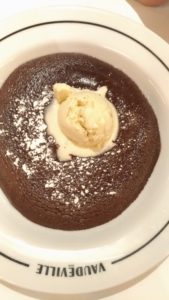
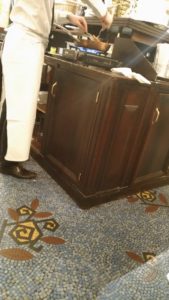 Many destructions took place in Paris, perpetrated by a raid of (bombers) German in January 1918.
Many destructions took place in Paris, perpetrated by a raid of (bombers) German in January 1918.
Later that year, the restoration work was started by the owner to revive the establishment. It is then that the Vaudeville takes its current configuration, and evolves from the status of coffee to that of real brewery, including the dining room, the bar, the counter, and the terrace.
If the walls are clad in marble, the floors of the dining room are covered with a blue mosaic punctuated with rosebuds.
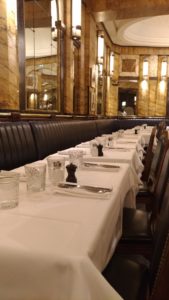
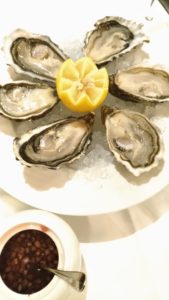 In the midst of misfortune, 1918 is synonymous with rebirth for the Vaudeville. It is this new configuration that is dressed by the Solvet father and son – already known for their work at the Closerie des Lilas, and starting that for La Coupole Paris – in 1926 that we have the pleasure to admire still today. They dress the Vaudeville with its ArtDeco finery.
In the midst of misfortune, 1918 is synonymous with rebirth for the Vaudeville. It is this new configuration that is dressed by the Solvet father and son – already known for their work at the Closerie des Lilas, and starting that for La Coupole Paris – in 1926 that we have the pleasure to admire still today. They dress the Vaudeville with its ArtDeco finery.
Vaudeville Restaurant, 29 Rue Vivienne, 75002 Paris, 01 40 20 04 62.
https://www.instagram.com/p/BiURrakltkA/






